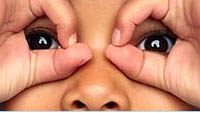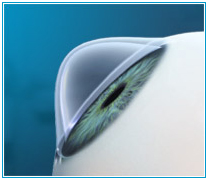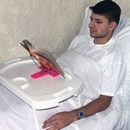Causes of clouding lens, types of cataracts, treatment, testimony for operation and its implementation.
Content
Cataracts — clouding lens and its capsules. By origin may be congenital and acquired. Congenital cataract due to a number of cases by influencing adverse factors on the fruit during pregnancy (rubella, cortex, flu, toxoplasmosis, hormonal violations in the mother's body) may have a hereditary nature.
Reasons for cataracts and its varieties
The acquired cataract happens the following types:
- age;
- complicated due to the influence of internal factors;
- complicated due to the influence of external factors.
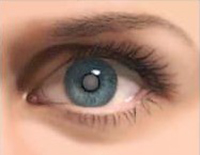
Aging cataract develops gradually, starting with a crystal capsule (cork) or from its nucleus (nuclear). Depending on the cloud stage, the initial, immature, mature and overripe of cataract distinguish.
Internal factors leading to Cataract, are severe recurrent inflammatory eye diseases, general exhaustion, endocrine pathology. Kataract, due to the effects of external factors, include post-traumatic, radiation and toxic cataract form.
Conservative and Surgical Cataract Treatment
In the initial stages, conservative treatment with drugs that improve the metabolic processes in the lens are carried out at the initial stages to prevent clouding. These are eye drops «Taufon», «Queenax», «Offanta Katova» and etc.
Lounge of a lens making everyday activity and restrictive capacity, — Indication for lens extraction (its surgical removal). Before the operation, you need a thorough examination of the function of both eyes. With full blindness (absence of perception of the eye of the light), the operation is not carried out. In the presence of inflammatory processes, their treatment must need. Cataract combination with glaucoma — Indication to the antiglaucomatous operation before extraction.
Removal of lens is performed under a microscope using the smallest microsurgical technique. Special operating table allows you to fix the patient's head.
Types of extract of crustal
There are two main methods for lebid removal: intracapsular and extracapsular extraction. In case of intrakapsular extraction, the lens is removed along with a capsule through the arcuate cut on the cornea border and sclera. This method is fraught with postoperative complications, because it is rarely used. With extracapsular extraction, the lens capsule is revealed and its contents are removed. The incision is the minimum, the remaining capsule prevents the displacement of the vitreous body forward and is a container for artificial optics.
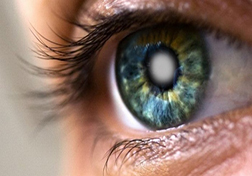
In recent years, 2 main techniques have been used to destroy the lens and removal. First — Ultrasound Facoemulsification, t.E. Crustal division into fragments with ultrasound. The method is used relatively often, but contraindicated to elderly patients due to the possibility of lens dislocation due to the weakness of zinnovy ligaments, as well as with very solid cataract forms. In these cases produce laser extraction. Under the specially elected laser beam, the substance of the lens literally melts and is easily removed from the capsule.
After removing the altered lens, a folding intraocular lens is introduced into the remaining capsule, the so-called artificial lens. In experienced surgeons, ophthalmologists, such operations occupy 15-20 minutes and do not require general anesthesia or special training.



